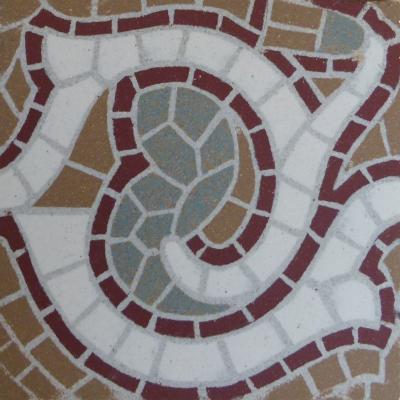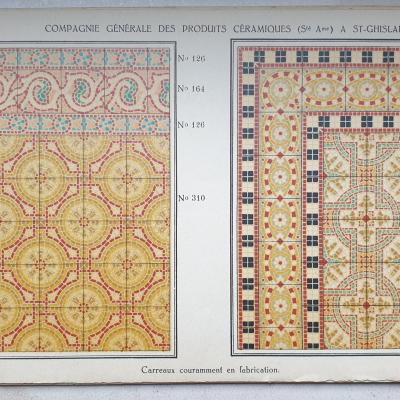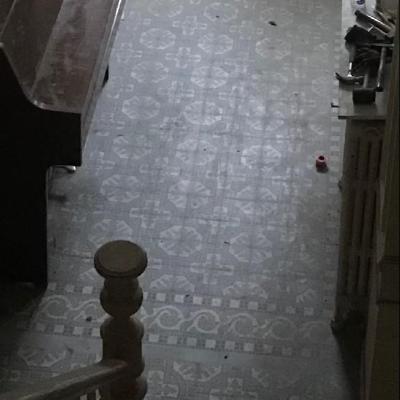An 11m2 mosaic themed St Ghislain floor - 1933
Reclaimed from the entrance hall of a house in renovation in Gembloux, Belgium an 11m2 / 118 sq ft ceramic encaustic floor comprising of a principal field tile, a same sized border and a half-sized border laid in duplicate top and tailing the large border.
The tiles are 14.3cm sq and c.15mm thick and all four of the large border corner tiles and eight of the half-sized border corner tiles are present and correct.
The faux mosaic theme of the whole floor was popular in the 1930's and indeed this 91 year old floor is dated 1933 as it appears in the manufacturers catalogue, Compagnie Generale des Produits Ceramique (Ste. Ame) a St Ghislain, Belgique. We include in the photo gallery a scan from their 1933 catalogue in our possession.
The floor has cleaned very well, as the photographs of a randomly selected section of 1.25m2 of the tiles show. The palette is easy on the eye and the harmony between the caramel and sage green is particularly appealing. There are ocassional small chips and edge nibbles on a small number of tiles but all groutable on what is a good and heavy ceramic with a deep slip.
Should you need assistance with looking at the potential fit of this, or any other of our floors, in your chosen area we will be happy to assist and evaluate that, without obligation, from either a simple sketch with key dimensions or an architects drawing.
Tile quantities by tile type:-
Field tiles - 340 - 7m2 / 74.8 sq ft
Large border tiles - 105 plus 4 corners - 2.2m2 / 24 sq ft - 15.6 linear metres / 51.1 linear feet
Half sized borders - 185 plus 10 corners - 1.94m2 / 20.9 sq ft. - 27.2 linear metres / 89 linear feet
NOTE:-
Antique tiles were most commonly made in single or two tile moulds. Before current computer automation methods their moulds were made my hand and the colour slips mixed by eye. Kiln temperatures could also be variable, as could the firing time. The result is that often tiles display subtle size and thickness variations and there can be tonal variations in colours, owing to the slip mixing and/or firing time. All of this makes these handmade tiles unique and adds to their charm. Some floors display their subtle variations in size and tones, some not, but when photographing we always take a random section of the floor so that it is representative of the whole. A tiler should always dry lay a section of the tiles to familiarise himself with them before starting to fix lay.
CL199
































